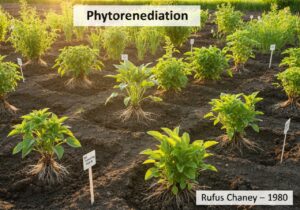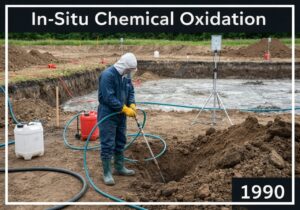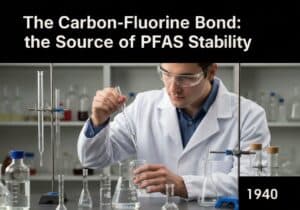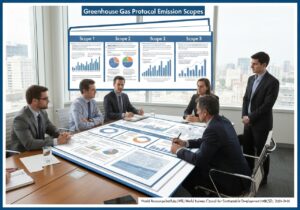Unlike many persistent organic pollutants that accumulate in fatty tissues, long-chain PFAS like PFOA and PFOS primarily bind to proteins in the blood serum (e.g., albumin) and accumulate in well-perfused organs like the liver. This leads to bioaccumulation within an organism and biomagnification up the food chain, resulting in higher concentrations in apex predators, including humans.
PFAS Bioaccumulation and Biomagnification
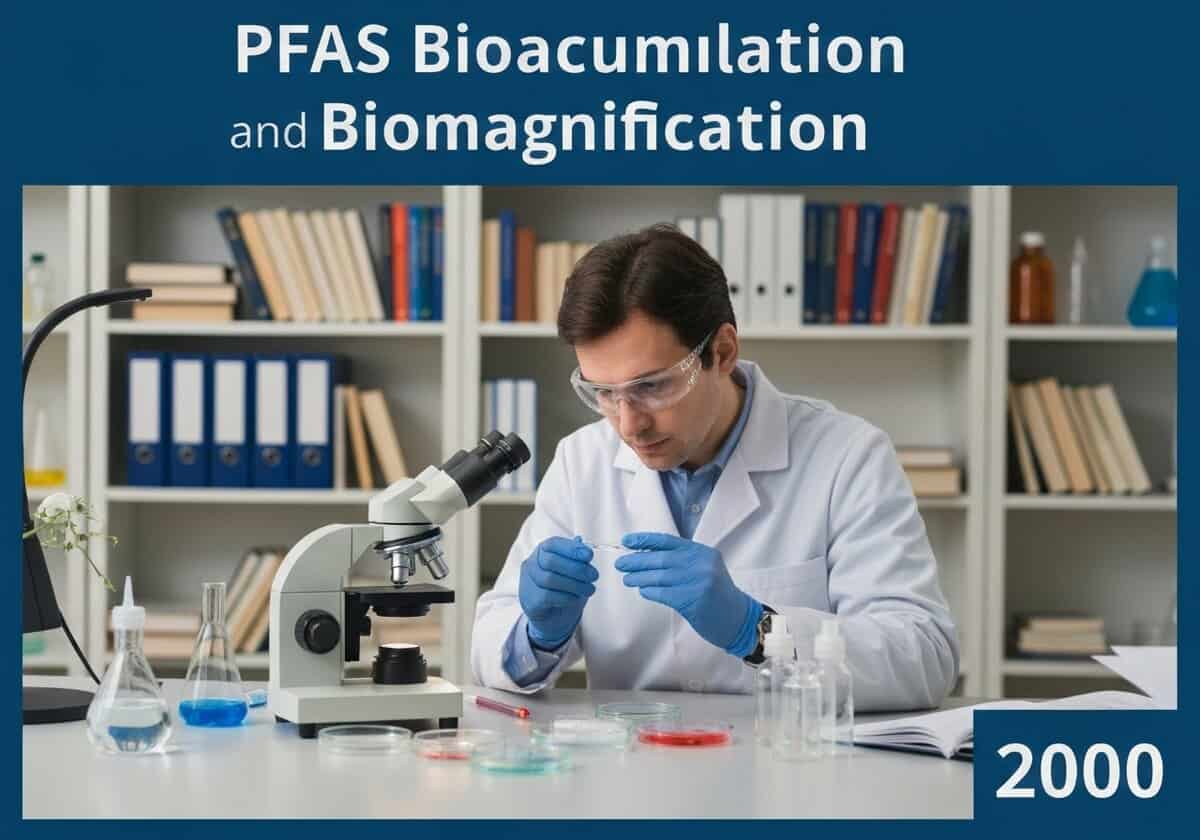
The environmental behavior of long-chain PFAS is distinct from classical persistent organic pollutants (POPs) like PCBs or DDT. While traditional POPs are lipophilic (fat-loving) and accumulate in adipose tissue, the amphiphilic nature of PFAS (having both a hydrophobic/lipophobic tail and a hydrophilic head) dictates a different biological fate. The charged functional group (e.g., carboxylate in PFOA or sulfonate in PFOS) interacts with proteins. Specifically, these compounds bind to serum albumin in the blood and fatty acid-binding proteins within cells. This protein-binding mechanism facilitates their transport throughout the body and leads to accumulation in protein-rich tissues and organs with high blood flow, such as the liver, kidneys, and blood itself. Because they are not easily metabolized or excreted, their biological half-life in humans can be several years. This persistence within a single organism is the basis for bioaccumulation. As organisms are consumed by others higher up the food web, the concentration of PFAS increases at each trophic level, a process known as biomagnification. This is why top predators like polar bears, dolphins, and humans often exhibit the highest levels of PFAS contamination.
النوع
الاضطراب
الاستخدام
السلائف
- understanding of food webs and trophic levels
- development of analytical chemistry techniques (e.g., LC-MS/MS) to detect low concentrations of chemicals in biological tissues
- the concept of bioaccumulation established with earlier pollutants like ddt and mercury
- studies on protein binding of pharmaceuticals
التطبيقات
- development of public health advisories for fish consumption
- environmental regulations limiting pfas discharge (e.g., stockholm convention)
- biomonitoring programs to track human exposure levels
- toxicological models to predict health risks
براءات الاختراع:
أفكار ابتكارات محتملة
!!مستويات !!! العضوية مطلوبة
يجب أن تكون عضوًا !!! مستويات!!! للوصول إلى هذا المحتوى.
متاح للتحديات الجديدة
مهندس ميكانيكي، مشروع، هندسة العمليات أو مدير البحث والتطوير
متاح لتحدي جديد في غضون مهلة قصيرة.
تواصل معي على LinkedIn
تكامل الإلكترونيات المعدنية والبلاستيكية، التصميم مقابل التكلفة، ممارسات التصنيع الجيدة (GMP)، بيئة العمل، الأجهزة والمواد الاستهلاكية متوسطة إلى عالية الحجم، التصنيع المرن، الصناعات الخاضعة للتنظيم، شهادات CE وFDA، التصميم بمساعدة الحاسوب (CAD)، Solidworks، الحزام الأسود من Lean Sigma، شهادة ISO 13485 الطبية
احصل على جميع المقالات الجديدة
مجاني، لا يوجد بريد عشوائي، ولا يتم توزيع البريد الإلكتروني ولا إعادة بيعه
أو يمكنك الحصول على عضويتك الكاملة -مجانًا- للوصول إلى جميع المحتويات المحظورة >هنا<
السياق التاريخي
PFAS Bioaccumulation and Biomagnification
(إذا كان التاريخ غير معروف أو غير ذي صلة، على سبيل المثال "ميكانيكا الموائع"، يتم تقديم تقدير تقريبي لظهوره الملحوظ)
الاختراع والابتكار والمبادئ التقنية ذات الصلة

